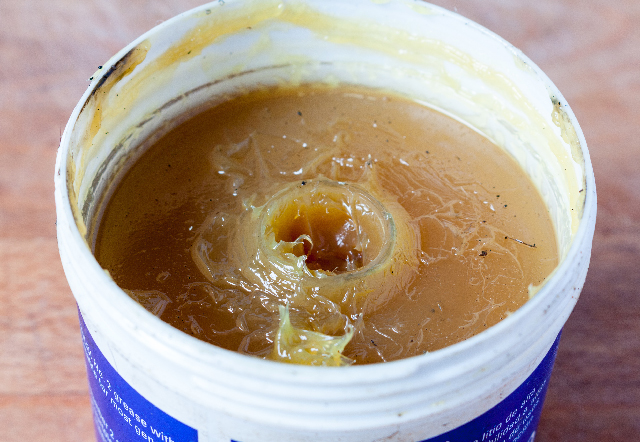Researchers attempt to create grease from waste oils and red gypsum
10/14/2018 / By Ralph Flores

Researchers from the Universiti Malaysia Pahang have developed a way to upcycle waste oil products by transforming them into grease. Their findings, published in the Australian Journal of Basic and Applied Sciences, breathe new life into waste oil products – which are commonly discarded and become pollutants.
In the study, researchers synthesized grease using waste oil and red gypsum – another waste product from making titanium oxide (TiO2) for cement. By using different types of waste oils and red gypsum, the team investigated which formulation had the best quality based on different ratios of red gypsum and fumed silica.
Oil, for the most part, is a significant contributor to water pollution. In cities, this happens when motor oil from leaky vehicles or those thrown out by commercial garages and homes, become part of stormwater runoff which then finds its way into local bodies of water. What’s worse, it’s not waste and used oil – themselves already a source of toxic substances such as lead, benzene, zinc, or magnesium – that are mixed into stormwater: Plastic litter, cigarette butts, paints, solvents, sediments, fertilizers, and insecticides are also swept in by rain and become pollutants. These are then carried by storm drains right into rivers and lakes, and ultimately, the ocean – where it poisons marine life and damages our ecosystem. In rural settings, the topsoil and natural vegetation can absorb some of the pollutants, but it can still leach into underground aquifers that provide us with clean drinking water. This, in turn, translates to millions of dollars a year in water treatment facilities, not to mention, operational expenses. (Related: Oil and gas industry pumping more toxic waste into drinking water aquifers.)
For the study, researchers looked at ways to convert this waste into grease, in particular, the base oil that forms lubrication grease. Currently, the base oil used is mineral oil, noted for its stability when exposed to both high and low temperatures. In the tests, the team used different ratios of red gypsum and fumed silica to determine which formulation will produce the best grade of grease, according to the grades set forth by the National Lubricating Grease Institute. Particularly, the red gypsum-to-fumed silica proportions were 80–20, 60–40, and 50–50, respectively, and tests were carried out using standards from the American Society for Testing and Materials (ASTM). This meant that the new formulations were tested to determine their stiffness, an important factor in lubrication; the type of thickener used for each; the amount of oil separated, which is a key characteristic when grease is subjected under pressure; and, the dropping point for each, which reveals the ability of each formulation withstand extreme changes in temperature. The new formulations were compared against those that were already on the market.
The team found that grease made from waste oils as the base material was found to be the most stable, with the resulting formulation passing all ASTM standards. In addition, this type of grease had no dropping point even after being subjected to temperatures reaching 464 F (about 240 C), which indicated that the grease is able to withstand higher temperatures. Grease made from waste oils also had a low penetration number, which meant that it was firm and consistent for application, and it produced very little oil in the oil separation test, revealing that it was stable and can withstand pressure. According to the researchers, the application of red gypsum as a thickening agent helped in the stability of the grease.
“Fumed silica was able to work as the thickening agent in the formulation of grease from waste oil) and it showed overall good performances,” researchers concluded their study.
Find more sources of alternative fuel at Power.news.
Sources include:
Tagged Under: base oil, Chemistry, discoveries, fuel sources, fumed silica, grease, recycling, red gypsum, silicone oil, waste oil


















